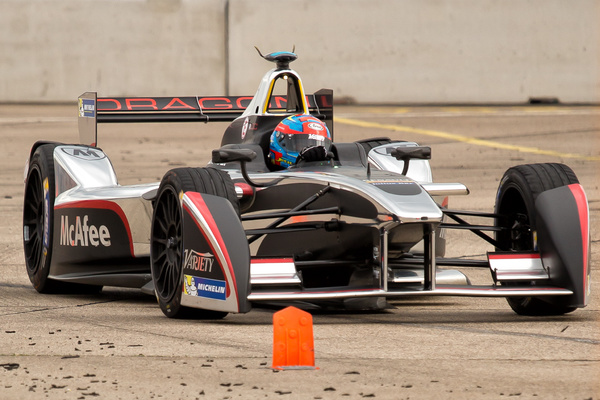|
in september 2014, the white flag dropped to start the inaugural fia (fédération internationale de l'automobile) formula e championship race in beijing. the new street racing series, based on the popular formula one series, sanctions only the use of electrically-powered vehicles.

formula e is a street racing series for electric vehicles. (wikimedia commons)
each race lasts about 50 minutes in formula e and each driver has two vehicles with the maximum power restricted to 170 kw. drivers can get power boosts from fan voting on social media.
during the first season, the cars were manufactured by spark racing technology with a chassis from dallara and an electric motor from mclaren, which is one of the top racing teams in formula one. the battery system was created by williams advanced engineering and michelin was the official tire sponsor. since the second season, new powertrain manufacturers were allowed, but the chassis and the battery stayed the same.
the third season of the formula e championship started in october 2016 in hong kong and swiss driver sebastien buemi will be looking to defend the title he won for the renault team.
a recent article in car and driver, gave insight into what is under the hood of a formula e car, in particular its battery and the thermal management system that it requires.
obviously, thermal management is a critical component of the battery, since improper thermal care will degrade battery performance and its ability to hold charge over the long-term. while the battery construction is similar to that in an ordinary electric vehicle, the article noted, the thermal management system is unique for formula e.
“williams advanced engineering, which supplies the packs for formula e, allows a cell to peak around 135 degrees before the battery-management system begins to limit the power output of the pack,” said the article. “the radiators and the cooling circuits are specifically designed so that, even in the hottest races in south america and asia, the cars won’t approach that temperature until the battery nears depletion.”
a commenter to the article added more detail with a description of coolant pouches mounted between the battery cells. the commenter added that dielectric fluid is circulated by the pump through the pouches and then the car’s radiator.
williams advanced engineering was honored for its work in creating the new battery design. learn more about the battery from this video on its presentation in 2014:
|